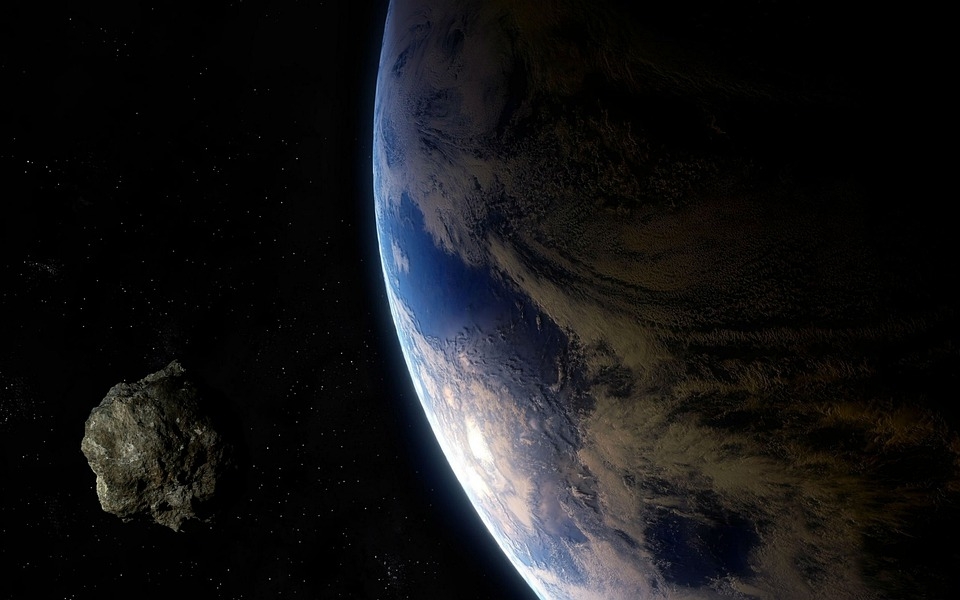Despite being able to track thousands of asteroids passing through space, there are still some rocks that can escape detection. One such asteroid is coming to Earth this week, with astronomers predicting that it will make a very close approach.
Last week, astronomers from the Mount Lemmon Survey in Arizona were able to detect an asteroid that was previously unnoticed. The asteroid is now referred to by MLS as 2020 SW and is predicted to approach Earth from a very close distance by Thursday, September 24. 2020 SW is estimated to measure 10 meters in diameter and is currently traveling through space at a speed of 7.7 kilometers per second or 27,720 kilometers per hour. This would be three times slower than the average speed of an asteroid even if it is extremely fast in human terms.
When it approaches Earth, however, it will get as close as 0.07 times the distance between the Earth and the Moon. Even with its distance, the astronomers have classified it as a near-Earth object or NEO.
“On September 24, 2020, the near-Earth asteroid 2020 SW will have an extremely close but safe encounter with us, coming at about 27,000 km from the Earth, 7 percent of the average lunar distance,” said the Virtual Telescope Project.
Previously, the weekend saw two asteroids make an approach to Earth. Astronomers at NASA have named the two asteroids as 2020 RH6 and 2020 RQ3. RH6 is the first of the two asteroids that passed by Earth, getting as close as 0.03174 astronomical units or 2,950,4177 miles away from Earth. When RH6 was detected, it was traveling through space at a speed of 8.32 kilometers per hour and measures around 200 feet in diameter but is classified as a near-Earth object or NEO. With its size, should RH6 collide with Earth, it could only cause damage to the area it hits.
RQ3 passed by Earth 14 afterward, passing by much closer than RH6 at 0.01586 astronomical units or 1,474,279 miles away from Earth. RQ3 is also the smaller asteroid from the pair, measuring at around 147 feet in diameter but was seen traveling through space at a speed of 25.42 kilometers per hour.



 Genetic diseases: How scientists are working to make DNA repair (almost) a piece of cake
Genetic diseases: How scientists are working to make DNA repair (almost) a piece of cake  Spacesuits need a major upgrade for the next phase of exploration
Spacesuits need a major upgrade for the next phase of exploration  Why now is the time to address humanity’s impact on the moon
Why now is the time to address humanity’s impact on the moon  Tatahouine: 'Star Wars meteorite' sheds light on the early Solar System
Tatahouine: 'Star Wars meteorite' sheds light on the early Solar System  The rising flood of space junk is a risk to us on Earth – and governments are on the hook
The rising flood of space junk is a risk to us on Earth – and governments are on the hook  Alpha, beta, theta: what are brain states and brain waves? And can we control them?
Alpha, beta, theta: what are brain states and brain waves? And can we control them?  Black hole, neutron star or something new? We discovered an object that defies explanation
Black hole, neutron star or something new? We discovered an object that defies explanation  Synthetic human embryos let researchers study early development while sidestepping ethical and logistical hurdles
Synthetic human embryos let researchers study early development while sidestepping ethical and logistical hurdles  Why is the universe ripping itself apart? A new study of exploding stars shows dark energy may be more complicated than we thought
Why is the universe ripping itself apart? A new study of exploding stars shows dark energy may be more complicated than we thought  If life exists on Jupiter’s moon Europa, scientists might soon be able to detect it
If life exists on Jupiter’s moon Europa, scientists might soon be able to detect it  Why some people don't trust science – and how to change their minds
Why some people don't trust science – and how to change their minds  Customizing mRNA is easy, and that's what makes it the next frontier for personalized medicine − a molecular biologist explains
Customizing mRNA is easy, and that's what makes it the next frontier for personalized medicine − a molecular biologist explains  Eggs from men, sperm from women: how stem cell science may change how we reproduce
Eggs from men, sperm from women: how stem cell science may change how we reproduce  Orbital resonance − the striking gravitational dance done by planets with aligning orbits
Orbital resonance − the striking gravitational dance done by planets with aligning orbits 































